Patellofemoral joint complication is among the leading causes for the failure of primary total knee replacement. In the knee joint, the anterior part of the femur is called the trochlear groove (Figure 1). When the joint wears down and a total knee replacement surgery is recommended, one of the goals of the femoral component is to restore the trochlear groove in such a way that the patella follows its natural pathway during knee movement. Most orthopedic device manufacturers address this goal with one of two design philosophies: ‘neutral trochlear groove’, or ‘lateralized groove’ (Figure 2). We (Exactech) performed a study to understand the native, healthy trochlear groove and compare its characteristics to those of implants from both design philosophies. To achieve our study goal, we recognized that a large study population would be needed in order to form a representative sample, as well as an efficient way to analyze the trochlear groove on each of the bones in the population.
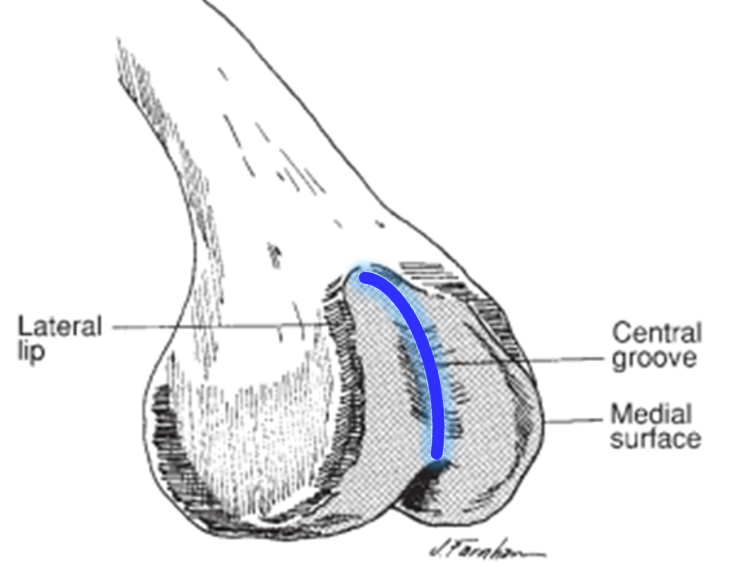
Figure 1
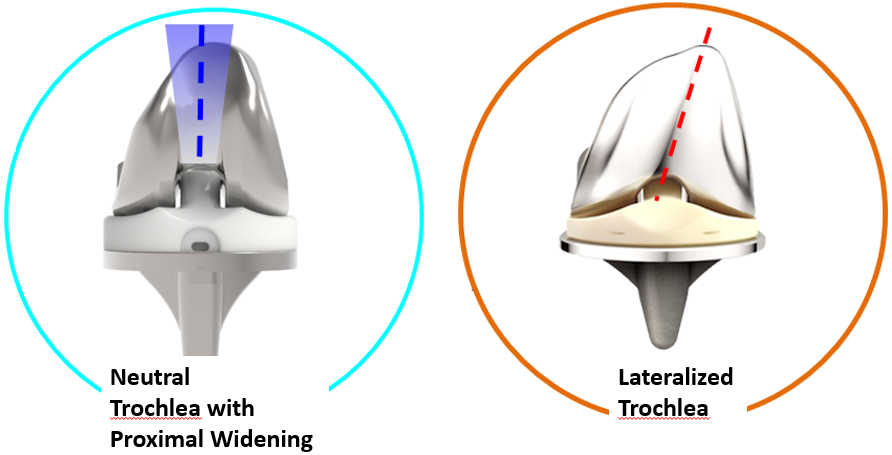
Figure 2
Performing an Automated Population Study
The study started with a database of 94 healthy CT-based femur models that had previously been segmented by Materialise in an Anatomical Data Mining (Adam) project. The population was chosen to be a mix of 47 males and 47 females, 49 of which were Asian and 45 were Caucasian. In each of the femur models, an anatomical coordinate system was established based on the mechanical axis. Then, a plane was rotated around the transepicondylar axis in 5° increments (Figure 3). This led to a series of intersection curves between the plane and the distal proximal femur, which reflected the trochlear groove’s M-shape. The lowest points of the intersection curves were used to calculate the trochlear groove angle (Figure 4). Creating each plane in the correct position and calculating the intersection curve manually would have taken well over an hour per bone, not to mention the room for human error and the tediousness of the work. Through Python Scripting in 3-matic, this task was automatically performed in less than two minutes per bone.
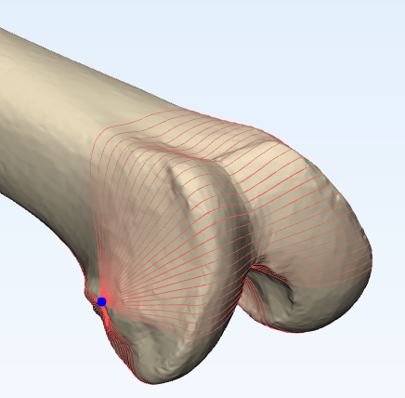
Figure 3
Design Philosophy Assessment
The trochlear groove orientation in five commonly used implants was evaluated against the data on the native femur. The Truliant Knee System was one of them. This implant follows the neutral groove philosophy with a proximally widened trochlear compartment in order to provide more “forgiveness” to accommodate the naturally varying patella tracking, while the other four knee systems each designed a fixed lateralized trochlear groove angle.
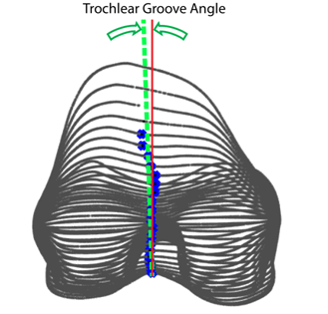
Figure 4
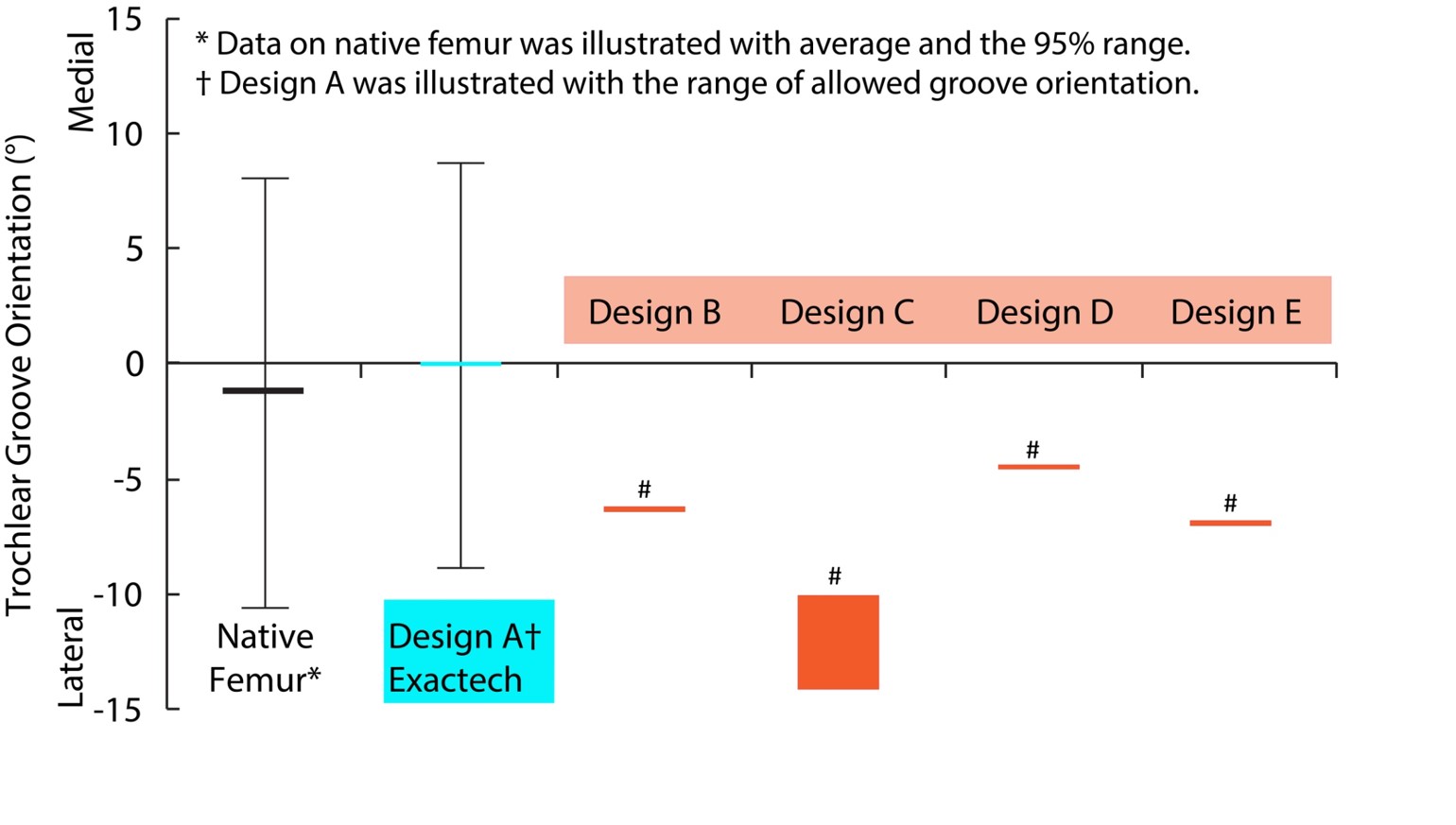
Figure 5
Analyzing the Results
The trochlear groove’s orientation turned out to be on average neutral, but quite variable within the population, ranging from -10.8° to 8.0° (negative sign indicating lateral tracking of the trochlear groove in the distal to proximal direction). When comparing this to the orientation of the trochlear groove in implants from the two design philosophies mentioned earlier, we (Exactech) observed that the trochlear groove of the implant according to the ‘neutral trochlear groove with proximal widening’ philosophy corresponded very well to that of the study population (Figure 5). The variation allowed by the implant also matched the natural variation in the study population. This contrasted with the designs that had a lateralized trochlear groove; they tended to deviate laterally from the population.
Cost-Effective Population-Driven Device Design through Workflow Automation
The automated workflow developed in this study, utilizing Materialise’s Python Scripting in 3-matic, allowed us to:
- Work with a larger study population than would otherwise have been possible
- Work in a highly efficient way that minimized the manpower and chance of human error
- Avoid repetitive work and enable us to focus on more interesting tasks
- Create a workflow that could easily be expanded and customized for future projects
Materialise’s note:
If you want to discover the possibilities of workflow scripting for yourself, check out our free MIS 20 webinar with Exactech or contact your local Account Manager or Application Engineer.
